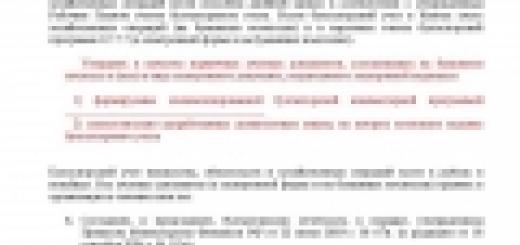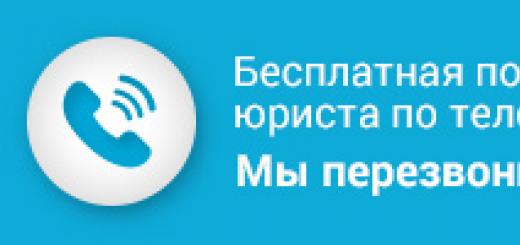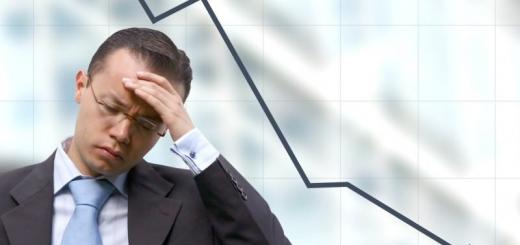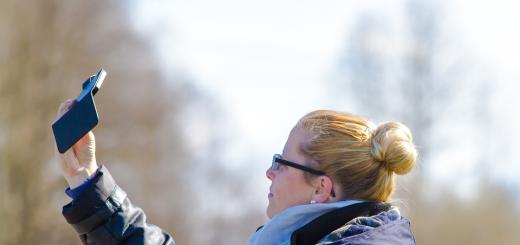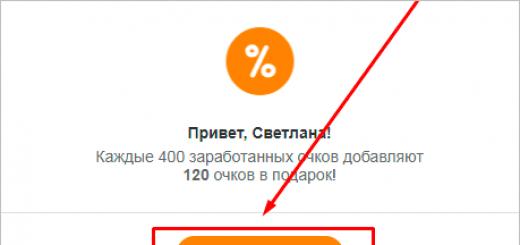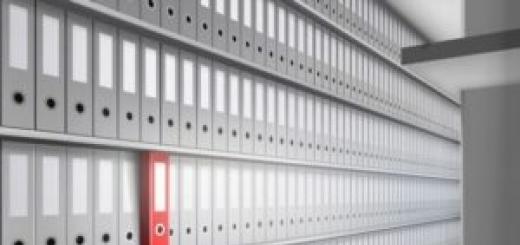Leading Russian banks are planning to introduce technology for remote recognition of customers by selfie, Izvestia reports. First of all, Sberbank, VTB24, Citibank, SMP-Bank and some other credit institutions are interested in the innovation. Along with convenience and comfort, banks guarantee high levels of security and reliability, but not all experts believe that this is possible. All the pros and cons of such innovations were weighed by the editors of 360.
 The very idea of biometric identification in the banking sector is not new. Representatives of Sberbank told 360 that a similar system has been used in the institution since 2014 - when issuing loans, the client's picture is compared with the photo in the passport.
The very idea of biometric identification in the banking sector is not new. Representatives of Sberbank told 360 that a similar system has been used in the institution since 2014 - when issuing loans, the client's picture is compared with the photo in the passport.
Taking a photo is a familiar and convenient process for most clients, which is why we consider facial biometrics one of the most important parts of our biometric system.
Press service of Sberbank.
The head of the credit department of Citibank Ksenia Mukhorina, in an interview with 360, noted that the institution uses similar technologies all over the world, including in Russia. However, in our country, face recognition of a client is not yet used, which cannot be said about fingerprints - they can be used to enter the bank's mobile application.
We can talk about biometrics as a growing trend in the field of customer authentication, taking into account the improvement of systems [remote banking] and the desire of banks to be as convenient as possible for the client.
Ksenia Mukhorina.
Representatives of both banks stressed that the key issue in the further introduction of biometric technologies is their security. Therefore, you should not expect that they will completely replace the traditional ways of identifying a client. It is likely that biometrics will become an additional security guarantor in the provision of remote banking services.
It should be borne in mind that biometrics is mathematics, so it must be used wisely, correctly weighing the risks, which is why we are building an integrated system when different types of biometrics are used in combination and in conjunction with traditional methods, which allows us to achieve high reliability
Press service of Sberbank.
First of all, banks think about data security and quality of customer service, and biometric authentication is a uniquely effective tool. Citibank has its own fintech innovation arm in the US with several labs around the world. We develop and launch new solutions, including in the field of biometric authentication by fingerprint, voice, photo
Ksenia Mukhorina.
The project manager of Binbank, Vyacheslav Karnaushevsky, also confirmed to 360 that the institution is considering the possibility of introducing biometrics to identify bank customers.
Binbank is considering this possibility. Biometric services have proven themselves as an authentication tool for transactions. The bank plans to implement a program for the introduction of biometric services during 2017-2018, including identification/authentication by photo, palm pattern, voice
Vyacheslav Karnaushevsky.
Representatives of VTB24 also shared with 360 their plans for the introduction of biometrics. At the beginning of this year, the bank completed a pilot project for voice identification of customers when contacting a contact center - this allowed both to significantly increase the volume of verified transactions and minimize the risks of customers and the bank.
In addition, the credit institution launched a project for biometric identification of customers by appearance in a new type of office with paperless service.
Clients sign only electronic versions of documents. At the same time, in addition to the traditional identification by passport, the bank offers to pass authentication on a tablet, which additionally confirms that it was this person who signed the documents on a certain day and time
Press service of VTB.
I don't recognize you in makeup
 RIA Novosti / Vladimir Pesnya
RIA Novosti / Vladimir Pesnya
One of the main pioneers in the mass use of biometrics for customer identification can be considered the largest commercial bank in Europe HSBC. The advertising slogan for the "Voice ID" service says that using voice to access accounts is completely safe, because each voice is unique. The institution said that about 100 different characteristics of the human voice are used in the recognition process. It is not surprising that there were those who decided to test this axiom in practice.
In May, BBC Click reporter Dan Simmons opened an account with HSBC and chose "Voice ID" to access the account. After that, he asked his twin brother Joe to try to parody his voice and pass identification at the bank.
At first, the system did not buy into this prank. She then gave Joe seven more tries to get him through the authorization. The latter was successful. Despite the fact that the twin brother was unable to withdraw money from the account, he gained access to the history of recent transactions and the ability to transfer funds to other accounts.
Expert assessments
 RIA Novosti / Alexey Danichev
RIA Novosti / Alexey Danichev
Experts agree that the use of biometrics to identify bank customers carries a certain risk. Nikolai Komlev, a member of the expert council of the State Duma Committee on the Development of Information Technologies, in an interview with 360, said that potential fraudsters can not only look for loopholes in biometric systems, but also exchange this information with each other.
As soon as it becomes known what algorithms the program of a particular bank uses, they will disseminate this information in their circles. Some programs put more emphasis on the eyes, others on the shape of the nose. But the shape of the nose can be changed with makeup
Nikolay Komlev.
Dmitry Kuznetsov, director of methodology and standardization at Positive Technologies, told Izvestia that the technical characteristics of cameras of inexpensive smartphones or all kinds of image-enhancing modes can force financial institutions to expand the margin of error for recognition programs.
At best, algorithms for matching selfies and passport photos will not allow you to identify a client on the first try. If banks begin to neglect the accuracy of identification, fraudsters will have the opportunity to select “similar” people whom matching algorithms will identify as existing bank customers.
Dmitry Kuznetsov.
Gleb Cherbov, deputy director of the Digital Security security analysis department, told the publication that in our time, attackers may not even have to select "similar" people - all the photos necessary for this can openly lie on the pages of users' social networks.
Gleb Cherebov.
Despite this, Komlev is confident that the developers of banking programs will apply enhanced security measures and, in general, will be able to resist fraudulent attacks. At the end of the conversation, he noted that the potential benefits of such an innovation are worth it to continue its development.
This is a natural trend. I think that within a few years the system will begin to recognize customers, greet them, invite them. All this can become convenient, including for the elderly, who find it difficult to remember passwords, ciphers and digital codes. And even when they enter them, they ask strangers to help them and call out loud all the secret data
Nikolay Komlev.
people shared an article
From time to time, people who try to take photos in the bank building are faced with polite, and sometimes - and sometimes - and not so - claims from employees of financial institutions. Like, you can’t withdraw from banks.
If you ask - why?- they will answer you that there is an internal instruction that prohibits taking photographs in banks. You can join the discussion and try to prove that there is nothing forbidden in such acts. Especially in a situation where almost every pocket contains a smartphone, and, as you know, you can’t put your policeman in every pocket.
But usually discussions on the topic of photography end with insinuating conversations with security officers ...
Therefore, we decided to send a person from the editorial office to the banks, so that he, under the guise of a tourist, changed the currency, and at the same time clicked the camera, admiring the architectural beauties of Belarusian banks.
The choice fell on the editor-in-chief - anyway, he does nothing, he only drinks coffee and swaps letters in words. Let it go, let it go. We handed him a large camera, which, however, is inferior in image quality to most 13-megapixel cameras in smartphones, a voice recorder and 2 metro tokens, so that our representative, like everyone else, reached the Frunzenskaya metro station, near which, as you know, there are many bank offices.
The shooting conditions were determined as follows:
- a journalist with a big camera hanging around his neck walks into a bank and just takes a picture
- journalist does not take portrait shots of bank employees
- we don't take pictures in the ticket booths
Please do not photograph anything on the sly!
The first office I decided to go to was Regional Department No. 7 of Technobank on the Melnikaite, 8. First, a snapshot of the entrance so that surveillance cameras, if any, filmed the unlucky paparazzi.

All infrastructure is clearly visible
I go inside, in front of me is a counter with a consultant and a security officer. I take a voucher in the electronic queue device by pressing the button "Currency - exchange operations", and I was immediately invited to the cashier.
I change Belarusian rubles for 5 dollars, thank the cashier, get out of the booth, turn around and take a picture of the cashier's closed door. A security officer, standing 3 meters away from me, asks in surprise:
- What do you have there, please?
— Photographing the checkout.
- Did you just like the first box office?
- Yes.
“I’m checking if it’s allowed to take pictures in the bank.
- Actually, the bank asks: “Is it possible?”
- And if I go to the operating room and take a picture there?
- You need to get permission. The operating room has its own head of department, which must give permission to photograph the operator or a group of operators. And then there will be no questions.

This photo started our conversation with a member of the Security Service
The conversation is going extremely well. Although the consultant, who is near the security officer, looks at me with literally amazed eyes, and asks her colleague:
— Can we take pictures at the bank at all?
- If they give good, then you can, the man answers.
- And if they don't?- the girl is interested.
- Sorry then.
I politely ask if it is possible then to go into the operating room and take a photo. A security officer escorts me to the operating room, where he asks the head of the unit:
- Alla Vladimirovna, here is a person who wants to photograph the hall.
- Hmm, I don’t even know if we can take pictures of something, the girl answers. All the operators look at me in a very surprised way. It seems that I am the first one who came to RU No. 7 with the desire to take a photo of the unit. Well, Gagarin, so Gagarin :)
This is followed by a few clarifying questions, such as - why do I need a photo, and where am I from ..
After that, the head of the unit contacts the head of the department, who proposes to coordinate this issue with the head of the Security Service. I was again escorted to the counter at the entrance, where the head of the Security Service was invited.
While we are waiting for the boss, I explain to everyone that the bank is not a secure facility, and according to the law, you can take pictures here. Again, the conversation is calm and polite. The head of the Security Service, Igor Vasilyevich, appears. He carefully examines me and asks about the purpose of my visit. I explain that I am writing an article on whether it is possible to take pictures in a bank.
It took less than 10 seconds for the person in charge of the Security Service in the department to “pump” me - my eyes lose their alertness. They explain to me that in order to shoot in the department, you need to get permission from the head of the department, Elena Petrovna. They lead me to her.
On the way, they are interested in whether I have any documents other than a passport. I answer no.
- The approval of the Security Department is definitely required, there was even a corresponding order on how to obtain approval. All filming is coordinated, - the head of the department, Elena Petrovna, answers.
I was then shown to an inner room, where I was asked to wait a few minutes. They bring Ekaterina, the head of the marketing department, to me, who again politely asks about the purpose of my visit.
I repeat that I am writing an article about whether it is possible to take pictures in banks, that modern smartphones sometimes give out such a picture quality that the pictures of many large cameras fade before. And that I do not set myself the goal of provoking Technobank employees.
– According to our internal instructions, photography and video shooting in the bank is prohibited, only with our consent, – Ekaterina explains the current situation to me. — For example, if I want to shoot a story, I write a document in the name of our Chairman of the Board - can I arrange the shooting. If he agrees, I notify the Security Service, and only then such work is carried out. If you decide just to come and start taking pictures, then we will not allow you to do this..
She also explained:
- If the client, sitting on the couch, takes a picture of the exchange rates, then no comments will be made to him. Because it is clear that he does this for himself and does not interfere with anyone, does not take pictures of other people, or any operations - something that can be compromised. But you can’t just come to the bank and start taking pictures. If you had contacted me yesterday, I would have coordinated the shooting for you today.
- But the Belarusian law does not prohibit coming to the bank with a camera,- I try to "protest a little" I.
— There are internal documents that regulate the work procedure. According to our internal instructions - it is impossible. If it’s possible somewhere, take photos, and we have such an order. Our security cameras can get into your frame, why show them to the public. When your Consumer Experience correspondent takes a picture, he does it for work, takes a check, a queue - something that we are not afraid of the consequences of. But what gets into your professional lens may raise questions. Therefore, please do not photograph anything on the sly.
I thanked Ekaterina, after which the Security Service escorted me to the exit.
Once again, the conversation with all Technobank employees was calm, polite and constructive. I have no complaints about them. And the fact that they were not allowed to photograph the operating room, because they don’t go to someone else’s monastery with their charter, although this is also not legally prescribed anywhere :)
Let's take a picture of the head office :)


Beautiful design - it looks especially good against the blue sky
Inside, I greeted the girl at the reception, took a ticket in the electronic queue device, turned my back to the bank employee and photographed the hall. I hope I was well visible from all security cameras.

Operating room. I repeat, my camera is large in size, but it shoots almost an order of magnitude worse than my smartphone

The video surveillance system also hit the lens - at the top, on the left

And this is the second half of the operating room on the ground floor
Nobody stopped me, nobody approached me, nobody asked what I was doing. I noticed only a slightly surprised look of the girl at the reception.
So I just had to take and leave the hospitable BSB Bank.
"Tourist" decides to rage
With each new photo, my feeling of "permissiveness" only increased. In order to cool him down, I hurried to the Minsk branch "Central" of BelVEB Bank, which is guarded not only by security officers, but also by policemen.

Minsk, st. Zaslavskaya, 10, Bank BelVEB

A sign on the wall opposite the entrance, and a security camera nearby. I "lit up"


Third floor. operating room

I go around the perimeter of the fence around the lobby rising to the pyramidal ceiling. And, of course, a photo for memory :)

After I made foreign exchange transactions and headed back, my attention was drawn to the cups that stood on a shelf above the head of one of the bank employees ...

Really, beautiful cups?
Theoretically, if it was impossible to take pictures in BelVEB Bank, then my wandering around the floors and indefatigable photography would have attracted the attention of the entire Security Service long ago. However…
At the consultant's desk, on the first floor, there was a girl - an employee of BelVEB Bank and a policeman. They looked very carefully at the "tourist" with the camera turned on, but said nothing.
Because it is possible to take pictures in Belarusian banks according to Belarusian laws. And the law is the law. We asked the director of EUS BEL LLC to comment on the situation with photo and video filming in financial institutions ( European Legal Service in Belarus). Opinion of a professional lawyer:
Speaking of video recording in various places open to the public, it is interesting to see how How is this issue regulated by law?. At the same time, one should take into account the hierarchy of regulatory legal acts, as well as the correctness of their interpretation and application.
Let's start, perhaps, with the main Law of the Republic of Belarus - Constitution. So, in accordance with Article 34 of the Constitution, citizens of the Republic of Belarus are guaranteed the right to receive, store and disseminate complete, reliable and timely information about the activities of state bodies, public associations, about political, economic, cultural and international life, the state of the environment.
Next, we will mention the first principle of regulation of information relations, specified in Article 4 of the Law of the Republic of Belarus dated November 10, 2008 No. 455-Z , which sounds like the principle of freedom to search, receive, transfer, collect, process, accumulate, store, distribute and (or) provide information, as well as use information.
It would seem that the basic principles (regarding the methods of obtaining, accessing and using information) do not define any restrictions and prohibitions, which allows each person freely exercise their legal rights.
However, when moving to the information itself, as an object, we still note that there are limitations.
Article 15 of the Law "On Information, Informatization and Information Protection" The following types of information are fixed, depending on the category of access:
- public information
- information, distribution and (or) provision of which is limited
Public information includes information, access to which, distribution and (or) provision of which is not limited.
However, there is a whole list of information restricted by law. It includes:
- information about the private life of an individual and personal data
- information constituting state secrets
- restricted service information
- information constituting commercial, professional, banking and other legally protected secrets
- information contained in cases of administrative offenses, materials and criminal cases of the criminal prosecution authorities and the court until the completion of the proceedings
- other information, access to which is limited by the legislative acts of the Republic of Belarus
So, for example, it is forbidden to take photos and videos at checkpoints on the State Border (Part 2 of Article 43 of the Law of the Republic of Belarus dated 21.07.2008 No. 419-Z "On the State Border of the Republic of Belarus").
It is forbidden to use video, photo, film cameras to passengers on board the aircraft, regardless of their position, without the appropriate permission (paragraph 64 Aviation Rules for the implementation of air transportation using state aviation of the Republic of Belarus, approved by the Decree of the Ministry of Defense of the Republic of Belarus of 08.01.2014 No. 2). And some other cases.
Thus, in shops, markets, in banks , in places of public catering, at stations and airports, in health care institutions and temples video and photography can be . Since this is - public places open for free visits.
At the same time, there is a tendency when some representatives of the administration of such places try to ban photography by issuing special “internal” documents for this. Are they right?
In accordance with Article 65 of the Law of the Republic of Belarus "On normative legal acts", normative legal acts concerning the rights, freedoms and duties of citizens come into force only after their official publication . Normative legal acts are published after they are included in the National Register of Legal Acts of the Republic of Belarus.
Thus, if a legal act introduces obligations for an indefinite circle of persons, for example, it prohibits filming, photographing objects that were not previously prohibited, or in places where it was previously possible to do this (for example, in places accessible to mass visits) he it should be
included in the National Register and published
otherwise it has no legal effect. Such a document cannot be "internal".
Summing up the above, I would like to note that the legislation of the Republic of Belarus does not enshrine a direct ban on photography and video filming in banks, both for “curious” citizens and for journalists performing their professional duties.
In addition, the legislation provides for the latter a special opportunity, without violating anyone's rights and legitimate interests, to fulfill their professional duties.
So, in accordance with subparagraph 4.7. paragraph 4 of the Law of the Republic of Belarus dated 17.07.2008 No. 427-З "About mass media" a media journalist is obliged to obtain the consent of individuals to conduct audio and video recording, filming and photography, with the exception of their conduct in places open to the public, at mass events.
In conclusion, we note that there is another opinion that photography and video filming can be prohibited on the basis that it is a violation of banking and (or) trade secrets.
However, in accordance with part 1 of Article 121 Banking Code of the Republic of Belarus dated 25.10.2000 No. 441-Z, bank secrets are and are not subject to disclosure of information about accounts and deposits (deposits), including the presence of an account with a bank (non-bank financial institution), its owner, number and other details of the account, amount funds on accounts and deposits (deposits), as well as information about specific transactions, transactions without opening an account, transactions on accounts and deposits (deposits), as well as information about property stored in the bank.
A trade secret regime for information can be established on the condition that the information that constitutes it is not generally known or easily accessible to third parties in those circles that usually deal with this kind of information, is of commercial value to its owner due to being unknown to third parties, is not objects of exclusive rights to the results of intellectual activity and are not duly classified as state secrets. (Paragraph 140 of the Civil Code of the Republic of Belarus dated 07.12.1998 No. 218-З).
Thus, in the case of photo and video filming in a bank branch, one cannot speak of a violation of banking or commercial secrets. It should also be noted that fixing the ban on such filming in the local documents of the bank limits the right of citizens to information established by the Constitution.
Mass media journalists in carrying out their professional activities are also guided by the Constitution of the Republic of Belarus and legislative acts of the Republic of Belarus.
Biometric systems are increasingly used in the financial sector as a fairly effective means of identifying customers and users. Post Bank, which has long launched a series of projects based on face recognition, shares its results.
There are many different types of biometrics: speech, face, fingerprints, iris, etc. Companies want to solve emerging problems and speed up customer service using affordable biometric tools.
“We consider all possibilities, but we use those that we consider feasible - preferably quickly, inexpensively and with the required degree of efficiency,” says Pavel Gurin, Advisor to the Chairman of the Board of Post Bank.
Now the bank uses fingerprints and a face image, as well as voice, in identification processes. Fingerprints are used for mobile app sign-in verification, and this modern way is getting positive feedback from customers. But one more main task remains to be solved - to integrate other methods of reliable identification into the mobile application, giving customers the opportunity not only to receive information services, but also to perform active operations: transfers, operations with deposits, obtaining loans.
Face identification of a person becomes especially relevant after the appearance of a "fake finger" - an implant that can mislead biometric security systems. However, it is important to make sure that the provided image is “lively” (lifeness), since intruders have much more opportunities for various manipulations in remote channels.
The face recognition system on the VisionLabs Luna platform is used most actively, and in three directions at once. Companies can use it to identify their employees who work in corporate systems and have access to important information, as well as to recognize customers at all stages of the loan process. In addition, it is often resorted to to serve customers if they come to the office without a passport, or when employees have doubts that a person is who he claims to be.
“Face recognition is a good engine, but it won't go anywhere on its own,” Gurin emphasizes. - He needs a chassis to apply his efforts and "fuel" that will be supplied to the input. It is important to understand where this technology is applicable and to be able to integrate it into operational processes.” The face recognition system began to be introduced back in the days of Leto Bank, after which the project became the largest of its kind in the world after it entered the structures of the Russian Post.
“When a new client comes to us, we take a picture of him and already at that moment we can check the availability of his data in the existing database according to certain rules,” continues Gurin. First, it is checked whether he is known to be a fraudster. Secondly, does his image match with photographs in other client records (in some cases - for example, when replacing a passport - such a match is legitimate). But changing the face of an existing client is definitely a reason for the trial.
However, such a seemingly positive fact as the complete coincidence of the photograph taken with the existing one should also make you wary. Most likely, for some reason, a bank employee used an old photograph of a client, and then there is a reason to suspect this employee of dishonesty.
It is worth noting that facial recognition has gone through quite a long evolutionary path over the past few years. It became possible to reliably recognize women with “combat” make-up, as well as people who change with age, gain weight or, conversely, lose weight. Neural networks have taken a step forward, and now the machine recognizes people better than a person - it is not a problem for it to turn its head 45 degrees, glasses, facial hair.
Disciplining effect
“We are a bank and we know how to count money. And that is why we are actively using technologies related to image recognition,” emphasizes Gurin. Cameras are inexpensive, at one time the bank bought them for several hundred rubles. Now, of course, the price has changed somewhat. This is purely a matter of expediency: if it were required to protect one centralized vault with money, all available biometric technologies would be used. This would be a very expensive solution, but acceptable for a one-time mission-critical task. The number of Post Bank branches is measured in tens of thousands, and the funds spent in excess of the norm for their arrangement translate into very significant amounts. It is face recognition based on photographic images that has become the most effective tool for solving several problems at once.
The cost of the implemented solution turned out to be within 10 million rubles, and server capacities and support increased the cost of the project by another two or three times. However, the obtained financial results allow us to say that the project has long paid off.
“When we did the first analysis of our customer base, which we photographed over several years, we found there photos of Brad Pitt and other celebrities, animals, palm trees and chairs,” says Gurin. Since the bank has 4.5 million customers and has processed applications from many more people during its operation, this is not surprising. Obviously, in the absence of effective control, the rules for processing credit applications were grossly violated. Now it is possible to fight against such dishonesty of employees.
The very presence of biometric identification systems affects the reduction in the number of incidents. When it becomes known that a bank uses such technologies, the number of fraudulent activities decreases dramatically. Attackers have word of mouth, and employees learn from their mistakes.
“At the pilot stage, for the first time after the launch of the recognition procedure, there were a lot of cases when similar faces were found in different clients,” says Gurin. “When the bank officially announced the availability of a biometric identification system, there were much fewer incidents, and now we can say that the number of people caught by the hand is relatively small.” In 2016, the system found 4.5 thousand reused photos, and the issuance of new loans for them was not allowed. 9.2 thousand obviously fraudulent applications were caught, when a person unknown to the bank came for a loan and presented a passport that was already in the bank database. Dubious transactions for the total amount of RUB 1.5 billion were prevented. Although in fairness it should be noted that for sure not all of them would end up with a loss of money.
Law enforcement agencies managed to transfer only four scammers. Detaining them in the absence of police officers is not an easy task. However, the bank does not focus on this: it is much more important to prevent fraud and not risk your money.
As for the authentication system for our own employees, the savings from replacing SMS informing when logging in to taking pictures amounted to 3.5 million rubles. in year. In addition, more than 600 attempts to log into systems under the account of their colleagues were prevented. Among other things, this was due to attempts to pass exams for other people in a completely distance learning and knowledge control system. The presence of a mass of untrained and unwilling to learn employees, and even ready for fraudulent actions, could not please the management, but now such opportunities for deception on the part of the staff are completely excluded.
A tangible manifestation of the operation of the system is also the reduction of the role of the human factor and the acceleration of service processes. No bank wants to make life difficult for conscientious customers. A significant part of the functions for checking passports and the identities of citizens has been transferred to biometrics. Operations have become much faster - customers like it and save time for employees.
Tags:
Post Bank, Pavel Gurin, VisionLabs, Luna, face recognition, biometrics
On the same subject:
Kazpost implemented face recognition
Kazpost has completed the first stage of the project to introduce a biometric system for verifying customers of the credit system based on the solution of Technoserv. Like the Russian Post, the operator provides banking services to the public, so fraud prevention is an important task for it.
5 key trends in the digitalization of the banking business
The vast majority of banking executives surveyed by Accenture acknowledge that the pace of technological innovation in their organizations has accelerated significantly over the past three years. In particular, 73% of banking executives believe that social, mobile, analytics and cloud technologies (SMAC) have led to widespread changes.
The Central Bank wants banks to collect biometric data of their customers
The Central Bank of the Russian Federation has developed a bill that, if adopted, will oblige all banks to collect biometric data of Russians - facial images and voice samples (so-called voice casts). For this purpose, special equipment will be installed in bank branches in all regions of presence, with the help of which a kind of electronic “card” with a face image and a voice cast will be created for each client.
Otkritie launched the Open Garage project
Otkritie Bank is launching the Open Garage project, which brings together the three operating areas of the bank: Digital, IT and Innovation. The key objective of the project is to develop the digital and IT sphere in order to form an open community of the best representatives of the industry.
